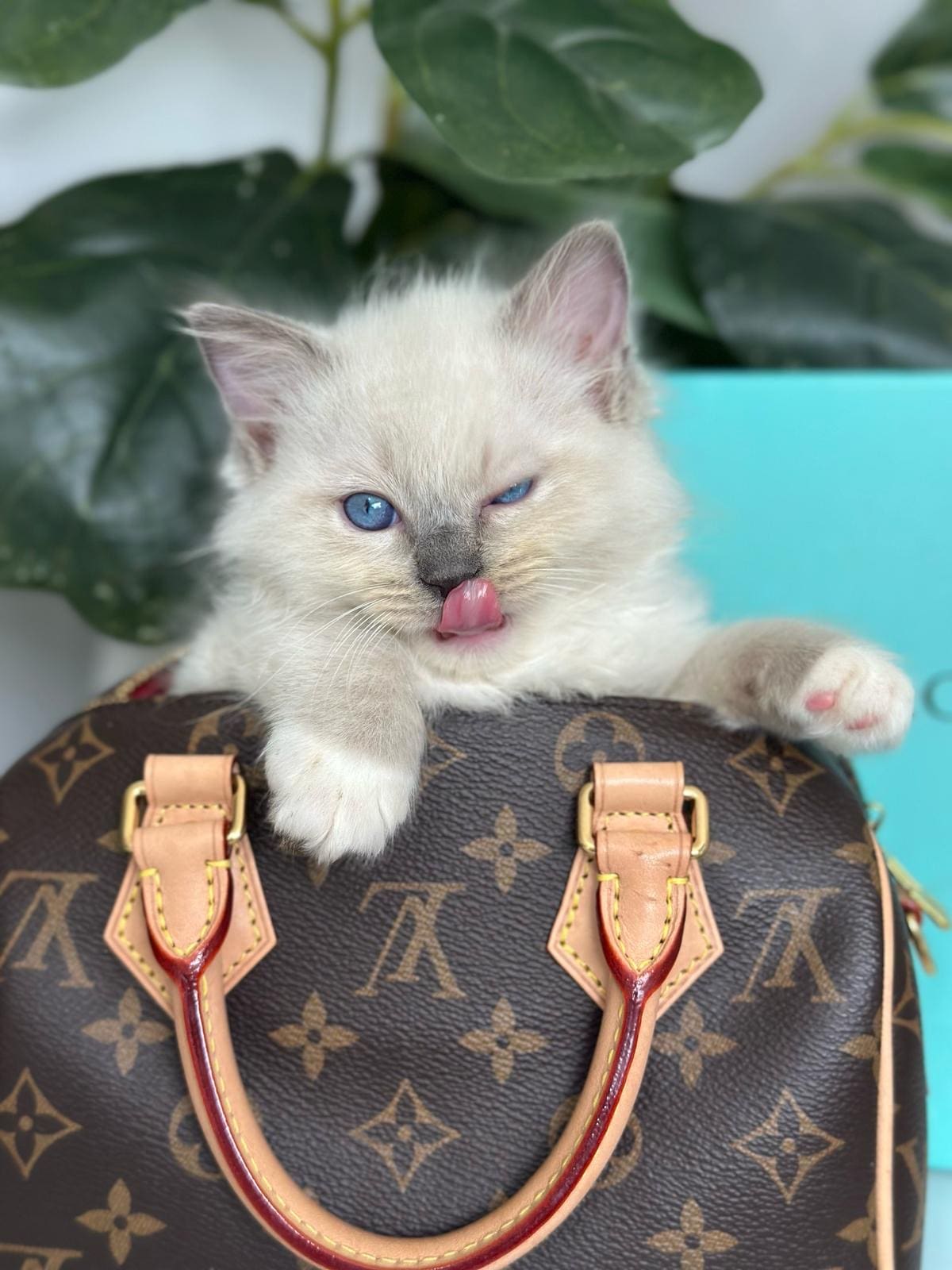FAQ
Can’t find the answer to your question you are after? Feel free to contact us and we would be happy to answer it.

Frequently Asked Questions
What is a pedigree Ragdoll cat?
Developed by an American breeder Ann Baker in the 1960’s, Ragdolls are best known for their docile and placid temperament and affectionate nature making them the perfect companion for those of all ages. Ragdolls are often known as ‘dog-like cats’ or ‘puppy-like cats’. This is due to their tendency to follow people around, their ease when physically handled, and their relative lack of aggression toward other pets and or people.
Today the words ‘pure-bred’ are thrown around loosely and the true definition of a ‘pure-bred’ – pedigree Ragdoll is that the records of ancestry (lineage) of the cat is available to the new owner. ie; Pedigree papers / Registration certificate from a registered cat governing body.
My breeding cats come from well known and respectable breeders. All Kdolls Ragolls have their own pedigree and this will go home in the kitten pack.
Why is my kitten desexed ( neutered / spayed ) before I get them? Is this safe ?
Yes all kittens will be desexed prior to leaving my home, not only is this a part of ethical breeding it is also expected from my governing body. ( ANCATS )
A veterinarian is able to desex a kitten once it hits the weight of 1kg, not only is this a safe and common practice it will prevent unnecessary calling, spraying and unethical breeding. Doing this at this age allows the kitten to recover in the comfort and with comfort of mum and siblings.
What is HCM & PKD?
HCM – Hyperthyroidism in Cats. Hypertrophic cardiomyopathy is the most commonly diagnosed cardiac disease in cats. Feline Hypertrophic Cardiomyopathy (HCM) is a condition that causes the muscular walls of a cat’s heart to thicken, decreasing the heart’s efficiency and sometimes creating symptoms in other parts of the body.
PKD – Polycystic Kidney Disease – polycystic kidney disease is an inherited disorder in which small, closed, liquid-filled sacs develop in the tissue of the feline kidney. These sacs (cysts) tend to multiply in number and grow in size over time, eventually overwhelming normal kidney tissue and often leading to potentially fatal kidney failure. There is no explanation for the development of these cysts except for a genetic anomaly that is evident primarily in Persians and occasionally in a few other feline breeds, such as Himalayans and British Shorthairs.
There are tests today that breeders can easily and should be doing for all breeding cats to help eliminate this from their breeding lines. – All breeding cats at Kdolls Ragdolls have been tested and are clear of HCM & PKD.
